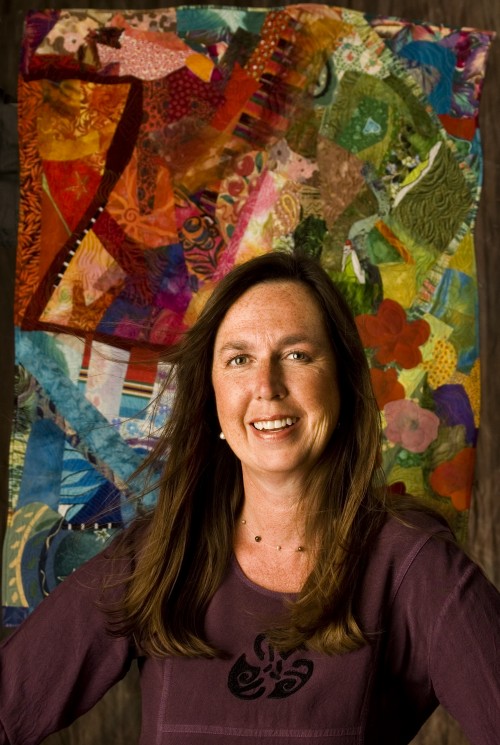I am living on the edge.
No, not that edge.
My edge has a chain-link fence along it, so I won’t walk over the cliff in the middle of the night, I guess, and sue the State of California. We are at a state beach in southern California, living both the paradise and the nightmare that is urban camping. Our neighbor’s radio is blasting Ryan Seacrest, counting down the American Top Forty, but there’s a stiff ocean breeze coming off the Pacific Ocean, which is anything but peaceful.
This is our middle-aged version of the beach. The thrills we seek are not related to deep tans, surfboards and loud music. Aside from our preoccupation with melanoma, our desires run to gin and tonics, and sandy afternoon naps. We make ungainly attempts at the surf on our boogie boards. We are still having fun, but in a geeky, adult sort of way.
Eliza Gilkyson, who writes the most exquisite songs, penned the line: “(We’re) comin’ upon a time in our lives when the little dream lives, but the big dream dies.” I take her meaning to be that in middle age, we had best lose our blue sky notions of who and what we could have become. We won’t be supermodels or NFL football players; instead we will write poignant bits of poetry or discover beautiful mathematics, or maybe just live steady, regular lives, grounded in everyday heroics.
At some point, when we figure out that that those commonplace dreams were mostly improbable to begin with, we mourn their loss. When we feel most betrayed, and we try to describe our loss to our children, we are shocked to find ourselves in the middle of a Star Trek-like episode: we can see our children and hear them, but there’s a glass barrier between us. Like some high-tech fabric, those big, fat idea molecules cannot penetrate the barrier that lets time and light through. Go figure.
___________________________
Our blue Flagstaff sky – that emblem of potential and unlived dreams — causes me to catch my breath. The midwestern sky I grew up with was almost never that clear blue, never etched my heart with longing. Intellectually, I know it’s the humidity that mucks up the color, but my gut says otherwise.
Every day I wake up to blue sky, I have the sense that this day could be the one perfect day when I’ll realize the potential that blue sky represents. That idea is deeply seductive, like a young hunk with smooth muscles and a great tan, who’s really a psychopathic serial killer. He’s a dangerous lay, and you know it, but you risk life and limb for a taste of that promise.
I suppose we all hanker for that moment when potential peaks, when we find ourselves at the crest of a wave, riding that hopeful vacuum.
But in the absence of action, in that vacuum where all things are possible, exactly nothing happens. Instead, we experience what my husband describes as “brilliant ideas, flawed in execution.” Accept imperfection as fact, and embrace it as one embraces an enemy, with trepidation and longing. Know that action assumes imperfection. Behold, imperfection becomes your ally, your teacher, the best friend you ever had.
Every day for a week, whenever I went into my studio to work, I stood there like a deaf-mute, like a blind woman, waiting for someone to take my hand and show me how to make art again. I was a wreck, having forgotten how to combine color and form to communicate ideas. Finally, the pressure squeezed me into self-reliance, forced me to make small, economical actions, one at a time. Finally, I busted through.
But in the end, all that remains of any of this is perception and illusion. In the same way that our brains reconcile what our right eye sees with what our left eye sees, we somehow resolve all the conflicting images and ideas that assail us. We form our own truths, create our own perceptive fortunes.
Over time, those perceptions merge and become solid objects with a corona of truth around them. We carry those truths around with us in our pockets, like beachworn stones, rubbed smooth by time and our own hands.

